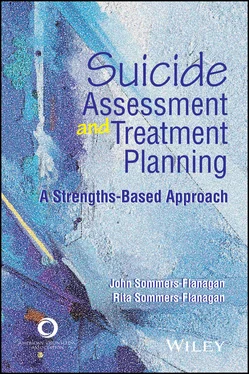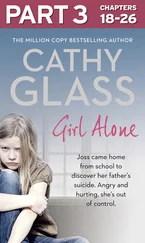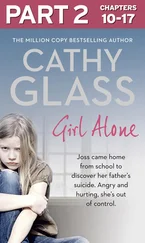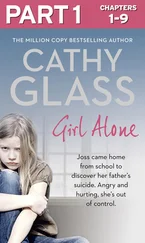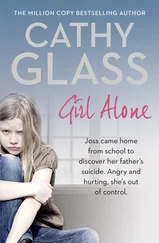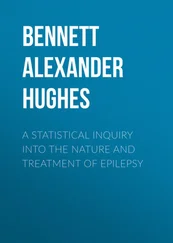John Sommers-Flanagan - Suicide Assessment and Treatment Planning
Здесь есть возможность читать онлайн «John Sommers-Flanagan - Suicide Assessment and Treatment Planning» — ознакомительный отрывок электронной книги совершенно бесплатно, а после прочтения отрывка купить полную версию. В некоторых случаях можно слушать аудио, скачать через торрент в формате fb2 и присутствует краткое содержание. Жанр: unrecognised, на английском языке. Описание произведения, (предисловие) а так же отзывы посетителей доступны на портале библиотеки ЛибКат.
- Название:Suicide Assessment and Treatment Planning
- Автор:
- Жанр:
- Год:неизвестен
- ISBN:нет данных
- Рейтинг книги:4 / 5. Голосов: 1
-
Избранное:Добавить в избранное
- Отзывы:
-
Ваша оценка:
- 80
- 1
- 2
- 3
- 4
- 5
Suicide Assessment and Treatment Planning: краткое содержание, описание и аннотация
Предлагаем к чтению аннотацию, описание, краткое содержание или предисловие (зависит от того, что написал сам автор книги «Suicide Assessment and Treatment Planning»). Если вы не нашли необходимую информацию о книге — напишите в комментариях, мы постараемся отыскать её.
Suicide Assessment and Treatment Planning — читать онлайн ознакомительный отрывок
Ниже представлен текст книги, разбитый по страницам. Система сохранения места последней прочитанной страницы, позволяет с удобством читать онлайн бесплатно книгу «Suicide Assessment and Treatment Planning», без необходимости каждый раз заново искать на чём Вы остановились. Поставьте закладку, и сможете в любой момент перейти на страницу, на которой закончили чтение.
Интервал:
Закладка:
After his disastrous interview, Brian called Lily. This was before cell phones. Even though her number was listed in a telephone book, Lily had written her number down for Brian, explicitly giving him permission to call. When she answered, Brian began sobbing, telling her that he was a hopeless case. He thanked her for all she had done, saying, “I just want you to know it’s not your fault.”
Lily was frightened. She insisted that Brian come to dinner at her house and spend the night on the family’s couch. She planned to call her volunteer director in the morning during his office hours. Ironically, calling the director after hours was a boundary Lily did not want to cross.
Brian came to Lily’s small apartment, ate dinner, and slept that night on the couch. He did not kill himself, but he did become a demanding force in Lily’s life that required several weeks of reboundary setting and extrication assistance from her volunteer director. Lily later went to graduate school in counseling and reflected on her choices with Brian. She was embarrassed by her well-intended but dangerous naiveté. She was grateful that nothing terrible had happened to her or her loved ones.
Pastoral counselors often have different professional boundaries than rehabilitation, career, school, or mental health counselors. Social workers may have different professional boundaries than psychiatrists or nurses. Licensure laws and ethics codes vary. Make sure the boundaries you set are consistent with the standards of practice in your community and within your professional discipline.
Case Vignette 2.2 Indirect Giving to Preserve Boundaries
Sharon was a school counselor who regularly visited with Hallie, a 14-year-old girl who lived in a group home because her mother was suffering from meth addiction. Hallie reported occasional suicidal thoughts. She was the brunt of jokes in the hallways because of her weight and wardrobe. Sharon was sympathetic and worried. She asked Hallie whether she could call the group home parents for a consultation. Hallie agreed.
The group home parents, Paul and Michelle, met with Sharon and Hallie. Together they made a plan for Hallie to see a mental health counselor and for Hallie to get an earlier ride home to avoid contact with bullies. Sharon also talked with the school principal about ways to address the bullying directly.
Because access to mental health counseling was limited, Sharon agreed to have Hallie meet with her for brief check-ins until Hallie got her own counselor. Sharon also connected Hallie and her group home parents to a school fund available for students to buy clothes, eyeglasses, and other items. Sharon did not mention that she was a regular donor to this fund.
Sharon was aware that it would feel gratifying to give clothing directly to Hallie, but she also recognized that doing so would be a boundary break. She wanted to preserve the emotionally supportive relationship she had with Hallie. If Hallie knew Sharon was providing clothing, Hallie’s expectations might have shifted. Here are two possibilities:
Hallie might have felt indebted, guilty, or ashamed. She might have pulled back and minimized contact with Sharon, despite her needs for emotional support.
Hallie could have begun regularly orienting to Sharon for her material needs.
Either way, small boundary breaks can have big implications for counseling and the counseling relationship.
Here are a few basic boundaries we generally recommend:
Unless your school or agency requires it and provides appropriate liability coverage, do not transport agitated clients who may be suicidal or agree to ride with them in their cars.
Do not invite clients to join you at social events or places of worship.
Do not invite clients to your home.
Do not give your clients your private contact information.
Do not discuss your family members with clients.
In Case Vignette 2.2, Sharon’s school counseling load included 300 students. She could not provide the contact and care for each of them that she was temporarily extending to Hallie. Sharon knew her limits. She brought in the group home parents, had a safety plan in place, and was actively working with Hallie to transition her mental health care to an appropriate community resource.
When Suicide Happens
Having a client die by suicide is an outcome that all mental health professionals dread. Not only will client suicides trigger sadness, anger, guilt, shame, fear, and self-doubt, but sometimes suicides lead to lawsuits or legal inquiries. Other times, suicide survivors or family members will reach out to counselors for support. Whatever the details, the aftermath of a client death by suicide is painful and complex. Several postsuicide measures can help professionals cope with losing a client or student.
Consultation Groups
If your practice includes routinely working with clients who are suicidal, we recommend that you participate in an ongoing peer consultation or peer supervision group. Peer consultation serves two important purposes. Professionally speaking, you need someone to review your assessment and treatment protocols as well as your documentation. If there are gaps in your documentation or questionable professional choices, your colleagues can help you prepare to account for these and orient you toward better practices in the future. Modifying clinical records is illegal, but understanding potential problems can help you focus on how to deal with legal inquiries.
Peer consultation groups also provide professional connection for solace and understanding from friends and colleagues. Emotional support from colleagues who face similar challenges can be especially meaningful. Wellness Practice 2.1includes a mood management strategy that you can use yourself or with your colleagues.
Wellness Practice 2.1 Happy Songs in Your Life
Music in general, and songs in particular, can trigger happiness, sadness, other emotions, and life memories. Sometimes emotional responses to music are all about the music. Other times emotional responses are about the personal associations or memories that the songs trigger. For example, when John listens to “Joy to the World” by Three Dog Night, he is transported back to positive memories of ninth-grade basketball. It is not unusual for people to turn to music to help regulate emotions or to heighten particular feelings.
For this wellness practice, experiment with the following, and then later consider engaging clients with this activity:
1 Select a song that triggers positive emotions for you.
2 Listen to the song twice in a row and just let the song do its work. You can do this with a friend or by yourself.
3 After you have listened twice and let the positive feelings come, respond to the following prompts:What emotion does the song bring up?What is your best guess (hypothesis) for why the song brings up that particular emotion?Do you usually intentionally listen to this song or just randomly wait for the song to pop into your life?Optional: Share the song with someone and tell that person why the song triggers positive emotions for you.
At the time of this writing, we have located several articles that illuminate issues that might emerge following a client death by suicide:
“Facing the Specter of Client Suicide” by Laurie Meyers (2015) in Counseling Today ( https://ct.counseling.org/2015/10/facing-the-specter-of-client-suicide/)
“As a Therapist, How Should I Grieve After a Patient’s Suicide?” by Lucy Maddox (2018) on Mosaic ( https://mosaicscience.com/story/therapist-how-should-i-grieve-after-patients-suicide/)
“Paradise Lost: When Clients Commit Suicide” by Marian Joyce (2013) on Psychotherapy.net ( https://www.psychotherapy. net/article/client-suicide-article)
Читать дальшеИнтервал:
Закладка:
Похожие книги на «Suicide Assessment and Treatment Planning»
Представляем Вашему вниманию похожие книги на «Suicide Assessment and Treatment Planning» списком для выбора. Мы отобрали схожую по названию и смыслу литературу в надежде предоставить читателям больше вариантов отыскать новые, интересные, ещё непрочитанные произведения.
Обсуждение, отзывы о книге «Suicide Assessment and Treatment Planning» и просто собственные мнения читателей. Оставьте ваши комментарии, напишите, что Вы думаете о произведении, его смысле или главных героях. Укажите что конкретно понравилось, а что нет, и почему Вы так считаете.
